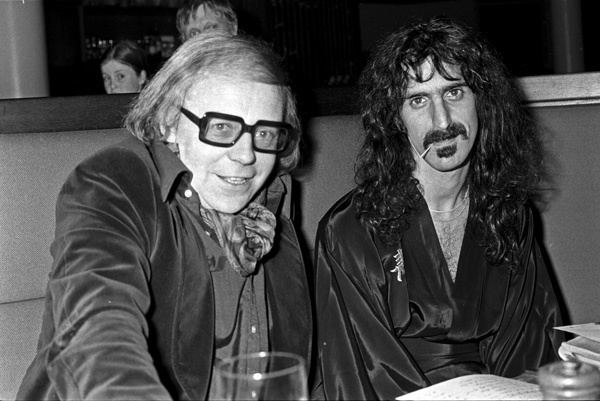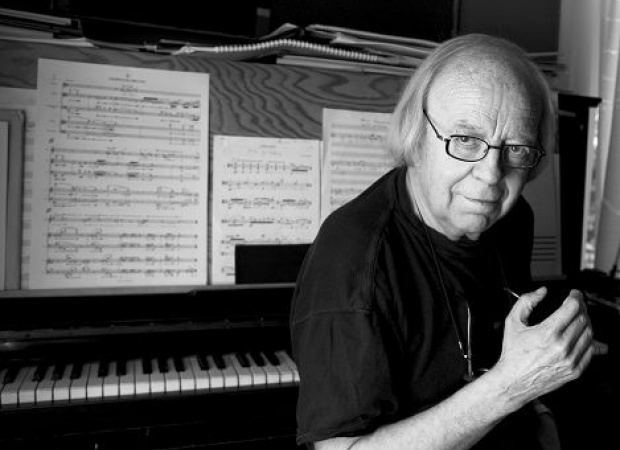Name Arne Nordheim | Role Composer | |
 | ||
Music director One Day in the Life of Ivan Denisovich, Vilde, the Wild One, Witch Hunt Compositions Requiem of Reconciliation, Requiem of Reconciliation, Raga Variations, Raga Variations, Aftonland: I, Aftonland: I, Partita for 6 Basses: II Morgana, Partita for 6 Basses: II Morgana, String Quartet: II Intermezzo, String Quartet: II Intermezzo, Duplex for violin and viola: III Lento cantando - Energico, Duplex for violin and viola: III Lento cantando - Energico, Aftonland: III, Aftonland: III, Twin Decks, Twin Decks, Rendezvous: III Nachruf, Rendezvous: III Nachruf, Journey to the Centre of the First 11, Journey to the Centre of the First 11, Katedra Botaniki, Katedra Botaniki, Tractatus, Tractatus, Rendezvous: II Intermezzo, Rendezvous: II Intermezzo, String Quartet: III Epitaffio, String Quartet: III Epitaffio, Warp/Warble, Warp/Warble, Aftonland: II, Aftonland: II, Les Fleurs du Mal, Les Fleurs du Mal, Duplex for violin and viola: I Energico, Duplex for violin and viola: I Energico, String Quartet: I Lento quasi una improvisazione, String Quartet: I Lento quasi una improvisazione, Partita for 6 Basses: I Passinato, Partita for 6 Basses: I Passinato, Magic Island, Magic Island, OHM 95, OHM 95, Trasparenza, Trasparenza, Journey to the Centre of the First 12, Journey to the Centre of the First 12, Partita for 6 Basses: III Avanti, Partita for 6 Basses: III Avanti, Rendezvous: I Praeambulum (quasi una fantasia), Rendezvous: I Praeambulum (quasi una fantasia), Duplex for violin and viola: II Fluente, Duplex for violin and viola: II Fluente, Solar Plexus, Solar Plexus Similar People Stephan Barratt‑Due, Bela Bartok, Truls Mork, Samuel Barber, Edvard Grieg | ||
Arne nordheim tenebrae per violoncello e orchestra
Arne Nordheim (20 June 1931 – 5 June 2010) was a Norwegian composer. Nordheim received numerous awards for his compositions, and from 1982 lived in the Norwegian government's honorary residence, Grotten, next to the Royal Palace in Oslo. He was elected an honorary member of the International Society for Contemporary Music in 1997. On 18 August 2006, Arne Nordheim received a doctor honoris causa degree at the Norwegian Academy of Music. He died at the age of 78 and was given a state funeral.
Contents
- Arne nordheim tenebrae per violoncello e orchestra
- Vincent van amsterdam arne nordheim flashing
- Musical education
- Career
- Prizes and awards
- Astronomical honor
- Music for stage productions
- Orchestral works and concertos
- Chamber music
- Choir
- Electro acoustic music and mixed media
- Music for film and TV
- Discography selected releases
- References

Vincent van amsterdam arne nordheim flashing
Musical education

At the then Oslo Conservatory of Music (now the Norwegian Academy of Music), where Nordheim studied from 1948 to 1952, he started out as a theory and organ student, but changed to composition, studying with Karl August Andersen (1903–1970), Bjarne Brustad, and Conrad Baden. Then in 1955 he studied with Vagn Holmboe in Copenhagen, and studied musique concrète in Paris. Later he studied electronic music in Bilthoven (1959), and paid many visits to the Studio Eksperymentalne of Polish Radio (1967–1972), where many of his early electronic works were realised (including Pace, Solitaire, and Lux et tenebrae (Poly-Poly)). In 2005, many lost and forgotten tapes of electronic compositions for radio drama for the Norwegian Broadcasting Corporation (NRK) were rediscovered, reminding us that Nordheim also developed his electronic musical language in his home country.
Career

His Essay for string quartet was first performed in Stockholm in 1954, but Nordheim always considered his String Quartet of 1956 as his Opus 1. His musical output is focused around themes of 'solitude, death, love, and landscape'; these themes are already evident in his song cycle Aftonland (Evening Land, 1959), a setting of poems by the Swedish poet Pär Lagerkvist, which brought him national recognition. The 1961 Canzona per orchestra was his international breakthrough. Inspired by Giovanni Gabrieli's canzone, the work showcases Nordheim's historical leanings, as well as his occupation with space as a parameter of music. Nordheim's spatial concerns, coupled with his focus on death and human suffering, are brought together in what is arguably his most famous work, Epitaffio per orchestra e nastro magnetico (1963). Written in memory of the Norwegian flautist Alf Andersen, who died that year at a very young age, the work incorporated Salvatore Quasimodo's poem Ed è sùbito sera. Originally conceived for orchestra and chorus, Nordheim realised that his wish to have the whole performance space 'singing' was better achieved with the use of electronic means. The result is a remarkable, almost imperceptible, blending of the orchestral sounds with the choral sounds of the tape, where the final line 'ed è sùbito sera' ('and suddenly it is evening') is the only part of the text that can be heard.
His later compositions include The Tempest (1979), Klokkesong (1984), Magma (1988), the Violin Concerto (1996) and Fonos for trombone and orchestra (2004). Arne Norheim was inspired by the neumes and the sound of the medieval bells in Kaupanger stave church in composing the work Klokkesong, which was first performed in the church. In The Tempest, a ballet based on Shakespeare's play, electronics and orchestral sounds are again mixed, while the focus is more strongly on vocal music (e.g. the 'double voice' of Caliban), while Nordheim's continued use of historical elements is shown by the incorporation of Leonardo da Vinci's musical rebus, which solved reads Amore sol la mi fa remirare, la sol mi fa sollecita.
1968 saw Arne Nordheim being bestowed with the Nordic Council Music Prize for his Eco for soprano, two choirs and orchestra. The work marks the start of a new development phase, in which Nordheim proved that he could create electrophonic-sounding timbres from conventional instruments.
Throughout his career, Nordheim would receive a number of commissions which would result in such works as Greening (1973) written for Zubin Mehta and Los Angeles Symphony Orchestra; the ballet Stormen (1979) for Schwezinger Festival in Germany; the cello concerto Tenebrae (1980) for Mstislav Rostropovitch; Aurora (1983) for vocal ensemble Electric Phoenix and the orchestral work Magma (1988) for the Concertgebouw Orchestra in Amsterdam. Additional major works include Wirklicher Wald (1983) for soprano, cello, choir and orchestra commissioned for the centenary anniversary for the Oslo Music Conservatory and Boomerang (1985) for oboe and chamber orchestra written for the Norwegian Chamber Orchestra.
Draumkvedet is a monumental stage work for orchestra, (acting) chamber choir, soloists and dancers, and was performed 40 times in 1994 with the Broadcasting Corporation Radio Orchestra and Grex Vocalis. A recording featuring these performing forces conducted by Ingar Bergby was made in 2001, and released in 2006 as a two-CD set on the Simax label (Simax PSC 1169). Based on a medieval Norwegian poem (Draumkvedet, The Dream Song), the work was composed in honor of the millennium of the city of Trondheim in 1997.
Nordheim was a great admirer of playwright Henrik Ibsen and devoted time to study his life and literary output. Nordheim composed music for Den Nationale Scene’s performance of Peer Gynt. On a number of occasions, Nordheim held talks titled “Thre composers' approaches to Peer gynt” which featured a highlight where Edvard Grieg’s music for Aase’s Death was sampled and spliced with Nordheim’s own composition. Naturally, both composers had elected to compose their scores for this scene in b minor.
To commemorate Nordheim’s 70th birthday in 2001, a celebratory concert was held, featuring the Oslo Philharmonic Orchestra. The Norwegian ministry of culture and church affairs would also celebrate the composer, and established the Arne Nordheim Composer’s Prize which is bestowed on an annual basis to a composer of Norwegian residence.
In later years, Nordheim suffered from dementia, and expired early on Saturday 5 June 2010, following a prolonged bout of illness. The state funeral was held at the Oslo Cathedral on 16th of June.
Prizes and awards
Astronomical honor
3457 Arnenordheim, a minor planet circling the sun in the main asteroid belt between the planets Mars and Jupiter was named for the composer after its discovery in 1985.
